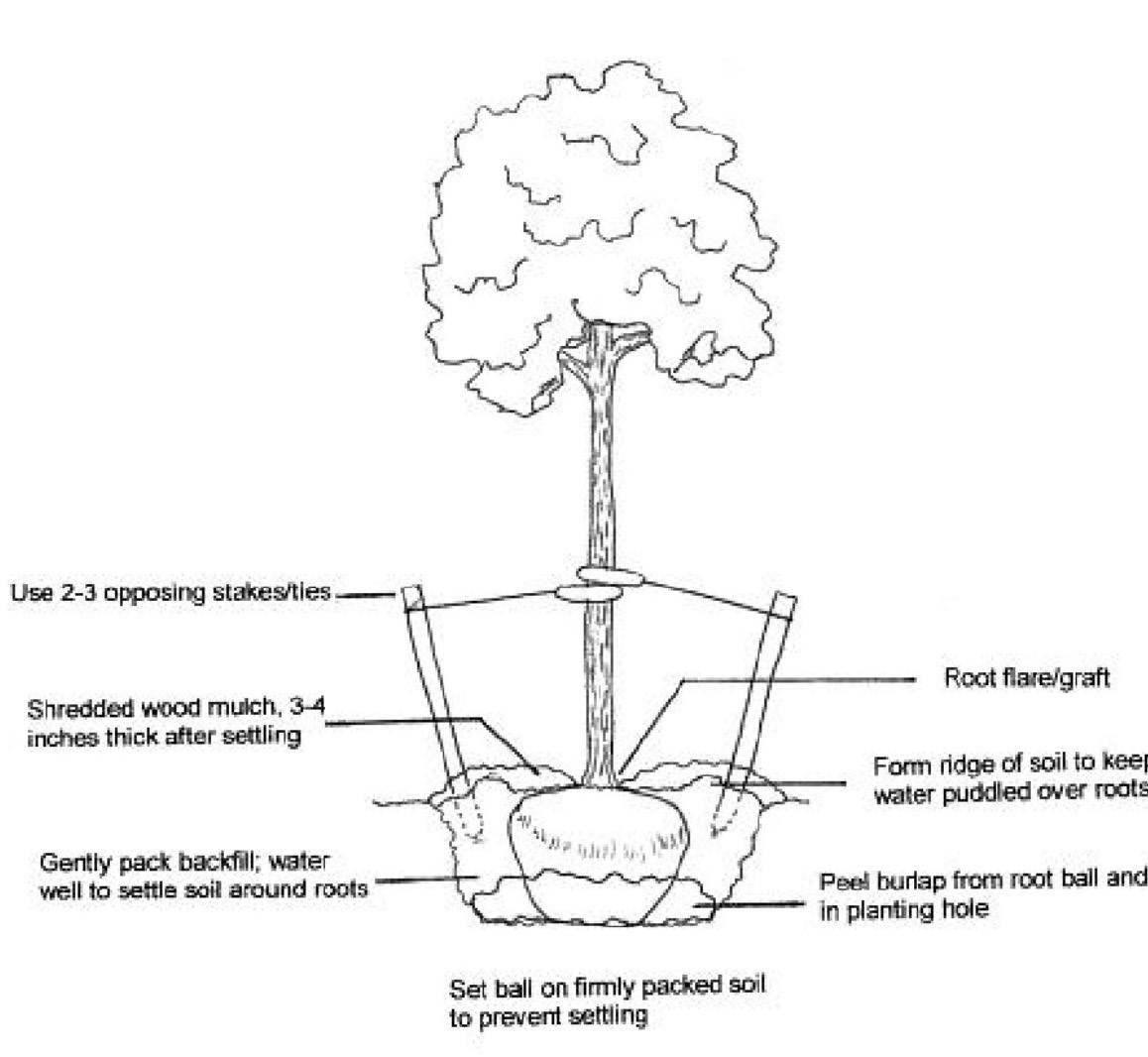
1 minute read
CAMPUS TREE CARE PLAN
1.06.3 Planting of Balled and Burlapped Trees (B&B)
1.06.31 Prepare a planting hole as described above. The depth of the hole should be the same as the soil in the root ball, and the width of the hole should be at least twice the width of the root ball.
Advertisement
1.06.32 Place the root ball into the hole so that the soil surface will be at the same level where the plant was previously growing, as indicated by the slightly darker area of the trunk. This is usually the same level as the soil in the root ball. Trees should be planted so that trunk flare is visible above the final soil surface.
1.06.33 Cut the twine from the root ball and peel back the burlap and any metal basket or other material meant to hold the root ball together. Remove burlap from at least top third of root ball. Remove all metal from root ball. Also be sure to remove all twine from around the trunk of the tree or shrub.
1.06.34 Backfill the soil into the hole a few inches at a time, firming the soil after each addition. While backfilling, be sure the tree remains vertical.
1.06.35 Form a ridge to hold water and stake trees as illustrated.
1.07.0 Install a tree guard on the base of each new tree to protect from weed trimmer damage. The guard must be expandable as the tree grows.
Appropriate B&B Root Ball Sizes Trunk
Common Planting Problems
Planting too deep roots suffocate
Planting too shallow roots dry out
Hole too narrow root system struggles to establish
Soft fill added to bottom of hole plant settles too deeply
Twine left on trunk girdles trunk
Wire basket left intact girdles roots
Container tree circling roots left intact root system struggles to establish/girdles trunk
Twine left on trunk – girdles trunk
Wire basket left intact – girdles roots
Container tree circling roots left intact – root system struggles to establish/girdles trunk
Examples of tree planting details for construction documents:
2.00.0TREE PRUNING SPECIFICATIONS
2.01.0 Projects on The University of Texas at Rio Grande Valley shall adhere to specifications based on the most current editions of the following for tree pruning:
2.01.1 American National Standards Institute (ANSI)
A300 - 01 Pruning Standards 2008(R2015)
2.01.2 ANSI Z133.1 Safety Standards
2.01.3 Related ISA Best Management Practices (BMP’s)

